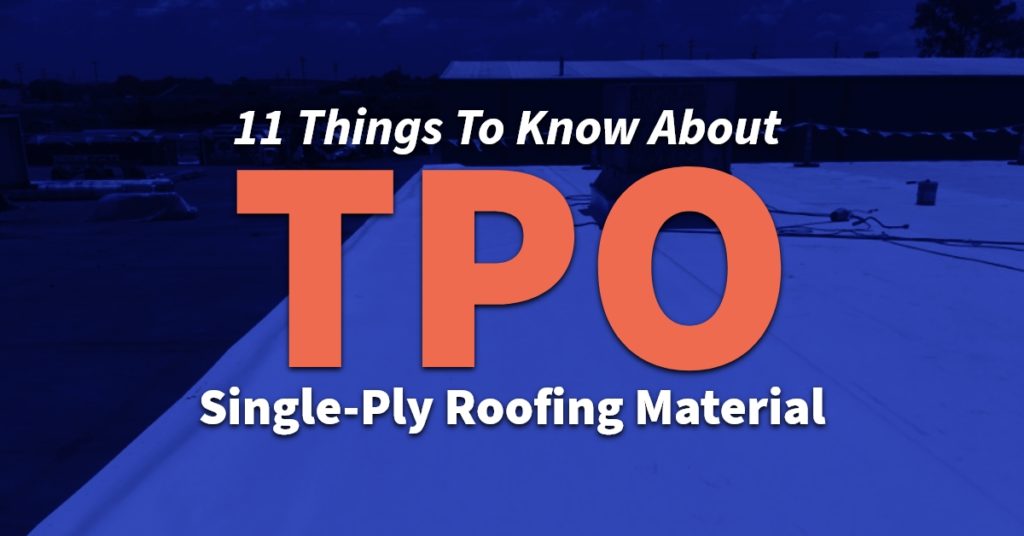It’s an awkward, if scientifically accurate, name: TPO, which stands for Thermoplastic Polyolefin. Its use as a commercial roofing product dates back to 1986, but before that it saw use as a liner for ponds and in-ground pools. Get up to speed on this superior roofing material with 11 Things To Know About TPO Single-Ply Roofing Material!
1. Thermo What Now?
Single-ply roofing materials easily divide into two categories:
- Thermoplastics
- Thermosets
TPO is a self-described thermoplastic, meaning it is a polymer that becomes plastic (malleable, shapeable, pliable, formable) when heated. Another familiar thermoplastic is PVC roofing membrane. TPO roofing membrane is made in rolls 10, 12, or 20 feet wide, drastically reducing the number of seams your commercial roof must have.
Thermoset materials, by contrast, become harder and less workable as they are heated. EPDM—ethylene propylene diene monomer—is one example of a thermoset roofing product.
2. Poly Whatsis?
A polyolefin is a type of polymer that resists chemicals. Because the membrane resists all chemicals, the seams of TPO roofing are not joined by solvents; they are thermally bonded with a heat gun for no muss, no smell, no mess. The result: a waterproof seam.
Put together as a thermoplastic polyolefin, TPO roofing is considered a synthetic rubber, giving it pliability, elasticity, plasticity, chemical resistance (as mentioned), and excellent heat reflectance.
3. How TPO Is Made
You could pour out a container of liquid TPO on your roof and have nothing but a runny mess—no waterproofing, no heat reflectance, nothing. TPO must be combined in a technologically advanced factory with a synthetic fabric scrim, or mesh, to reinforce the synthetic rubber. Together, TPO and the scrim form a sturdy, long-lasting, easily installed commercial roofing product.
4. How Long?
When commercial roofers say “long-lasting,” they are speaking in vastly different terms than residential roofers. Your home’s shingle roof may—may—last 15 to 18 years with a lot of luck and expensive care. A commercial roof is expected to surpass that, and TPO certainly does. The typical TPO roof will last 25 to 30 years or longer.
5. How TPO is Installed
Correct installation plays a critical role in giving your TPO roof its best chance to reach full maturity, somewhere 30 years in the future. TPO roofing unrolls in very wide sheets that, in most cases, can be as long as your roof. It can be:
- Mechanically attached (fasteners drive through the membrane and roof insulation into the roof deck)
- Fully adhered (by an adhesive)
6. Power Up
TPO roofing exceeds the federal government’s requirements for Energy Star Cool Roofing products. Using measures of solar reflectance and thermal emittance, TPO at installation and at the three-year mark performs better than other commercial roofing products such as Mod Bit and BUR.
7. Class A
TPO roofing is a Class A-rated material for fire resistance. That means it will not readily spread a fire when exposed to direct flame over several hours. It also is mold-resistant and impact-resistant.
8. Wind
An exhaustively researched study on double-sided heat-welded TPO roofing systems reported by the International Institute of Building Enclosure Consultants (IIBEC) showed that wind uplift of double-sided heat welds on mechanically adhered TPO roofs was vastly superior to one-sided welds and to ballasted materials.
9. Colors
While limited color options were the standard for several years, TPO roofing from various manufacturers is now available in many colors:
- Medium Bronze
- Rock Brown
- Slate Gray
- Patina Green
- Standard Tan
- Standard Gray
- Terracotta
Choosing bright white provides the greatest energy efficiency in hot climates, because of its maximum reflectance.
10. Maintenance
If you are hoping to save on roofing maintenance costs over the next two decades, invest in a TPO roof now. Your facilities crew will be greatly relieved to know the roof is not theirs to handle (all types of roofs are dangerous; keep untrained workers away). But your commercial roofer will also be happy to work on your TPO roof because of the minimal maintenance required:
- Annual inspection
- Annual cleaning and removal of debris
11. Curb Appeal and Resale Value
You add to your commercial property’s curb appeal with a TPO roof. True, many low-slope roofs are not easily visible from the curb, but any prospective buyer will inspect every inch of your facility. The TPO-covered roof is a sure selling point.
Why? A TPO roof installs quickly with minimal noise, odor, and fuss. It lasts for two to three decades with minimal maintenance. It reflects solar energy, lowering your cooling costs. A single annual cleaning keeps its resilient, tough surface shining clear and clean.With locations throughout the Southeastern United States, Rackley Roofing stands ready to serve commercial clients with all facets of commercial roofing services and products. Contact us today to see how we can improve your bottom line with our top-tier work.



